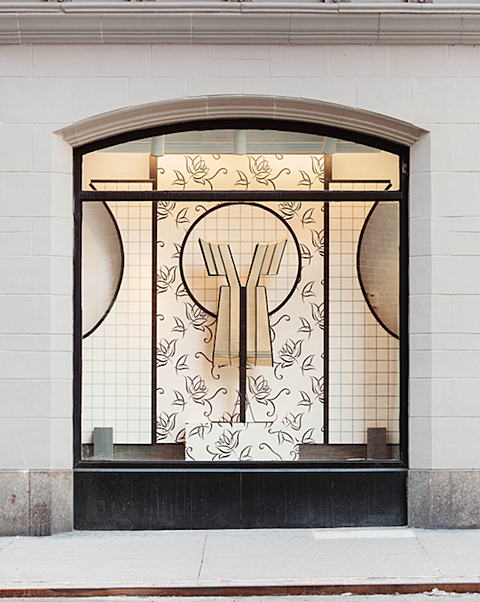Window Dressing was a site specific installation by Chicago-based artist Diane Simpson.
Diane Simpson is best known for her preparatory drawings and sculptures, which combine unconventional materials including fiberboard, perforated metals, faux fur, linoleum, and corrugated cardboard. Window Dressing pays homage to the “window dressers” of the 1920’s and 1930’s through the creation of a sprawling installation that is designed to exist in a series of inaccessible storefront windows and be viewed entirely by pedestrian traffic. Simpson’s conception of the project stemmed from her discovery of a 1928 bound collection of monthly trade journals for window designers, entitled MERCHANTS RECORD AND SHOW WINDOW. This publication, itself a manual containing how-to articles on designing merchandise display windows, advertisements for fixtures, mannequins, and artificial foliage, became repurposed as a sourcebook for her contemporary practice. Simpson finds endless possibility and inspiration in the window display format, which allows her to seamlessly integrate her sculptural works that are suggestive of clothing with backgrounds that evoke design of the deco period. The layering of these many components, comprising the complete installation, reflect the artist’s continued interest in blurring the distinctions between architecture, clothing, and design of various cultures and historical periods.
80WSE’s presentation of Window Dressing will be the second incarnation of the project, which was originally commissioned and installed in the six street-level windows of Wisonsin’s Racine Art Museum in 2008. For this version, Simpson has substantially reconfigured the installation, much in the way that traditional window displays exist as an ever-changing arrangement. As was the case with the window spaces in which Window Dressing was first shown, the original life of 80WSE’s window spaces was amidst a bustling department store district on lower Broadway in the late 1920’s. With each presentation of this project, Simpson seeks to transcend common notions of site specificity, instead facilitating a homecoming in which her work and the space collapse the past and the present.
Diane Simpson received an MFA in 1978 and a BFA in 1971 from the School of the Art Institute of Chicago. Recent solo exhibitions include JTT, New York and Corbett vs. Dempsey, Chicago. In 2010, a 30-year retrospective exhibition of her sculpture and drawings was held at the Chicago Cultural Center.



